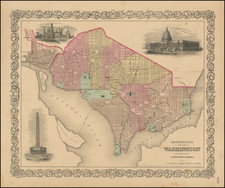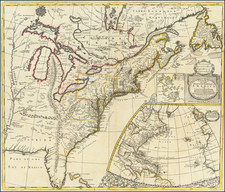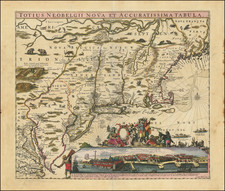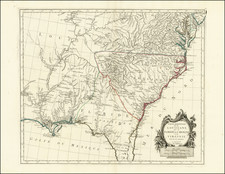The Battle which Secured George Washington’s Role as “Father of the Nation”
Finely-executed Revolutionary War Battle Plan of the Battle of Monmouth, the last major engagement of the Northern Theater of the American Revolution.
The present map is the only surviving printed battle plan of Monmouth. The plan was drawn from a manuscript by Michel Captain du Chesnoy (1746-1804), a member of the Marquis de Lafayette’s staff. Chesnoy drew a detailed eyewitness plan of the battle, which is now held by the Library of Congress (LC G3812.M64S3 1778 .C3).
The map focuses on the main engagement of the battle, along the road to Englishtown; there was much maneuvering and skirmishing before and after the events depicted. The map illustrates the theater of war around "Mont-mouth" and "Meeting house," the roads and paths in the area, and the battlefield to the northwest. The well-positioned "Rebel" forces on a hill to the west are shown firing cannon on a flanked detachment of British Light Horse, Grenadiers, and Artillery.
The map the battle which began with General Charles Lee's infamous miscarried initial assault on the British and George Washington's arrival on the scene, which is often considered one of this most important field engagements and a turning point in the Revolution.
Battle of Monmouth
The Battle of Monmouth took place on June 28th, 1778, as British forces were relocating en masse from Philadelphia to their new headquarters at New York. This was the first opportunity for the Continental Army to fight as a professional force, following a winter and spring of training at Valley Forge under Washington and von Steuben. This was a rare time that American forces held the battlefield (and both sides' wounded) after an engagement with the British. Although many modern historians view the battle as strategically inconclusive, at the time it was a major boost to American morale. American officers, the Continental Congress, and the American press interpreted the battle as a major success for the Continental Army, and for George Washington specifically. The action is seen as a coming of age for the Continental Army and it did much to elevate Washington to his role as “Father of the Nation.”
Historically, there is very little in the way of contemporary maps for Monmouth. The formal British mapping of the Battle of Monmouth was known exclusively from the manuscript maps of John Hills (fl. 1777-1816/17), a British military engineer, surveyor and draughtsman. Hills produced at least four manuscript maps focusing specifically on the Battle of Monmouth, three of which are held at the Library of Congress (LC G3812.M64S3 1778 .H51, LC G3812.M64S3 1778 .H5, LC G3812.M64S3 1778 .H5) and the fourth at the Clements (Clinton Papers, Brun 512).
Hills was attached to the 38th Regiment of Foot in June 1778. At that time, the 38th was stationed in New York City, and it had no direct involvement in the Battle of Monmouth. When the 44th decamped to Rhode Island later in 1778, Hills remained in New York and began his employment as a draftsman under John Montresor, the Chief Engineer of British forces in North America. Indeed, it seems that most of Hills produced most of his output came while stationed in New York, an opportune location for gathering, compiling, and copying maps, but not particularly for surveying and drawing original works.











![(Civil War) Stanford's Map of the Seat of War in America. Sheet I. [Mid-Atlantic States]](https://storage.googleapis.com/raremaps/img/small/96007.jpg)


![[ English Plantations in North America ] A New Map of the most Considerable Plantations of the English In America Dedicated to His Highness William Duke of Glocester.](https://storage.googleapis.com/raremaps/img/small/98233.jpg)